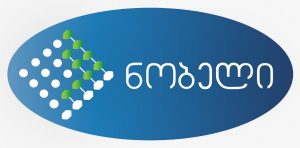Mental Arithmetic
Mental Arithmetic curriculum by levels:
It is believed that the current educational system fails to pay due attention to the development of imagination and creative thinking in children. Most educational activities focus on logical thinking. Modern issues require even more solutions which can be achieved by the synthesis of analytical and creative thinking simultaneously.
Neuron (nerve cell) is the basic structural unit of the brain. The point of contact between two neurons is referred to as synapse. Number of synapses between neurons determines an individual’s intellectual potential, brain flexibility, creativity, agility. Therefore, brain development is the process of formation and strengthening of such neuronal-synaptic connections. Each new information and subsequent special exercises generate new synapses.
In the language of structural units of the brain, this primarily implies a network of synapses equally developed in the right and left hemispheres and, on the other hand, the ability of the brain to use both hemispheres simultaneously in the process of thinking. The central idea of the methodology of mental arithmetic lies in the use of such exercises resulting in simultaneous loading of both hemispheres.
Abacus is an ancient tool. It has been used at work for a long time and has been included in the curriculum in Japan for several decades. In Japan’s elementary grades, the abacus (Japanese: Soroban) approach to training was based on a modern methodology invented in 1993. As such methodology is based on practicing complex arithmetic operations in the mind, it is also referred in short as mental arithmetic. Such methodology has spread all over the world and one can already find schools of mental arithmetic in many countries.
The Nobel School of Mental Arithmetic program is based on the classical methodology involving performance, with four fingers, of arithmetic operations (addition, subtraction, multiplication, division, percentages, square and cube roots) combined in a system for mental development. The program involves 9 levels with the duration of 3.5-4 years. Classes are held in 4 age groups: Pre-school (starting from 4 years old), Kg I: 1st grade, Kids: 2nd – 3rd grade, Junior 4-5+ grades; The duration of the first level varies for different age categories. For example: if Junior-month level 1 lasts 10 weeks, kids – 16, kg 24, and preschool students complete it in 30 weeks. In addition, one class per week of 2 academic hours is conducted, although such two classes may be conducted for two days a week.
As mentioned earlier, this program represents a scientific method for mental development based on the performance of arithmetic operations, and the performance of each exercise requires maximum focus, simultaneous involvement or use of various skills, leading to equal, synchronous development of both hemispheres of the brain. Such exercises are initially carried out using special tool –the abacus (Soroban in Japanese). This stage is important in the context of children learning the technique for proper performance of exercises, contributing to the development of fine motoric skills, followed by calculation using imaginary abacus, i.e. mental calculation, during which children perform exercises of various complexity on an imaginary abacus in their minds.
We offer the curriculum plan for the first, second and third levels:
Level I:
1. Training exercises for mastering the technique of using abacus. Calculation using abacusi within 1-100 range.
2. Performing simple operations on the abacus (without using logical formulas, when the coils given on the bar are enough to perform arithmetic operations).
3. Mental calculation within 1-100 range with simple operations on single digit and same number (11.22.33.44.55.etc.) two-digit values.
4. Using methodically developed concepts of various complexity (little friends), complex actions on abacus within 1-100 range, implying performance of exercises, using logical formulas, when there are not enough coils on the bar.
5. Recognition of numbers with imaginary cards within the range up to 100, when any number is studied and memorized in the form of a picture made of coils.
Level II:
1. Three-digit values.
2. The concept of big friends (BF).
3. Calculation of three-digit values on the abacus using simple operations.
4. Mental calculation with simple operations on one-digit and two-digit values.
5. Double friends (DF).
6. Calculation using abacus: using minor, major and double friends in complex operations.
7. Mental arithmetic: complex operations on single-digit numbers using minor and major friends.
8. Recognizing three-digit numbers with imaginary cards.
9. Standards: 2,3,4,5,6,7,8,9. Adding and subtracting numbers.
Level III:
1. Calculation on the abacus: with complex operations on 1,2,3-digit values using double friends.
2. Mental arithmetic on 1.2-digit values using double and major friends:
3. Mental calculation: with simple operations on three-digit values.
4. Standards: 10, 20, 30, 40, 50, 100.
It should be noted that at the third level, all complex operations are practiced while performing standards, during which children have to use minor, major and double friends in sequence, both on the abacus and under imagination. Focusing, quick and flexible mind lead to timely fulfillment of such standards, being one of the primary and important tasks both to proceed with studies and learn the subject at the following levels.
• 4th, 5th level multiplication;
• 6th , 7th level division;
• 8th, 9th level percentages, square roots.
